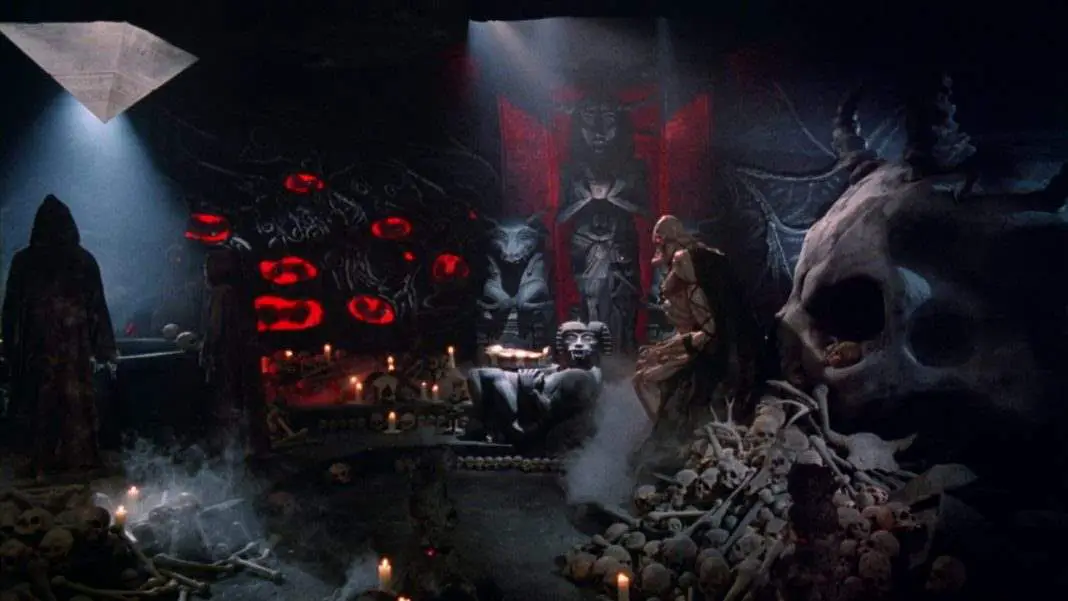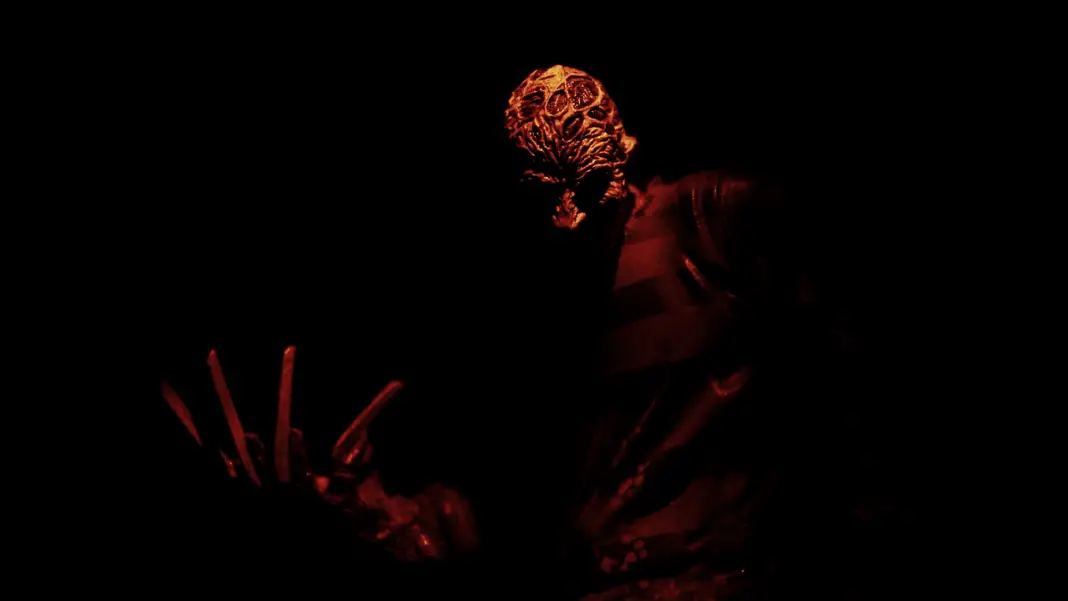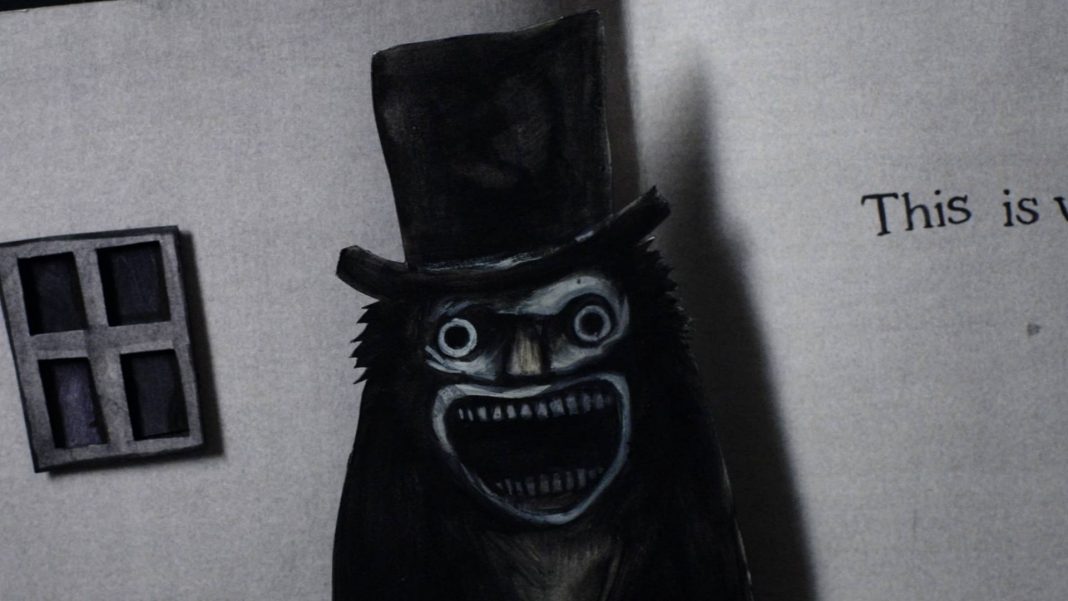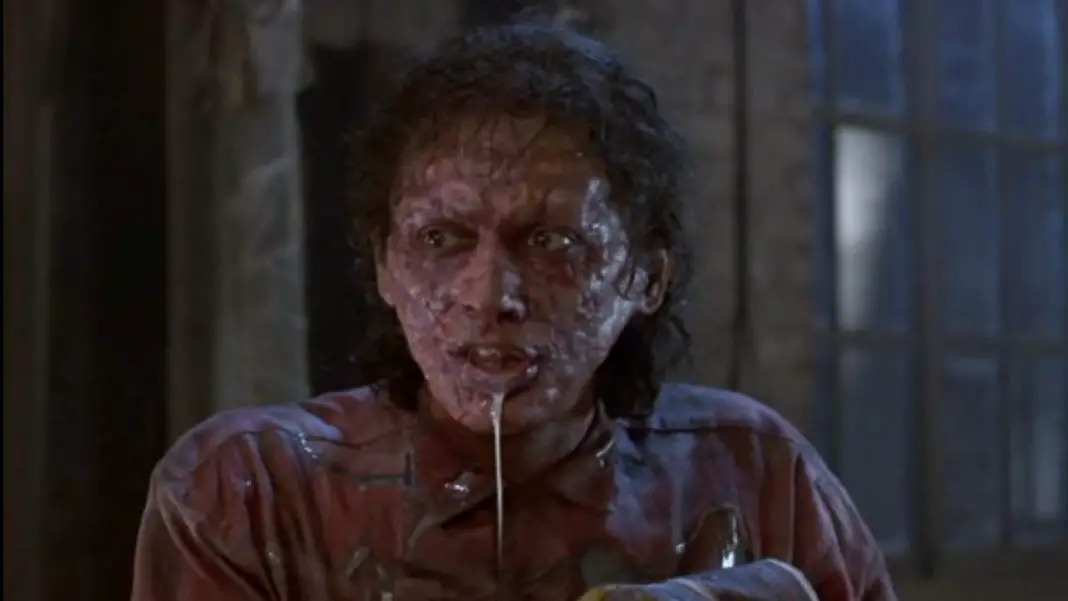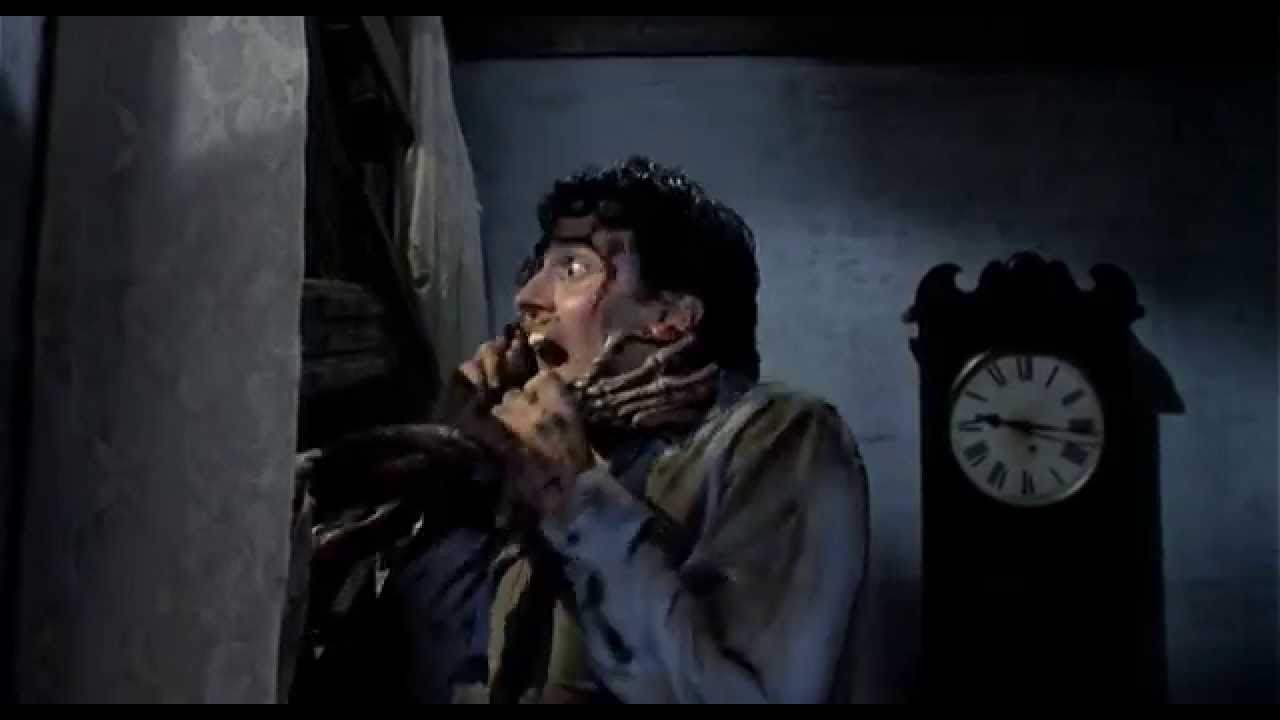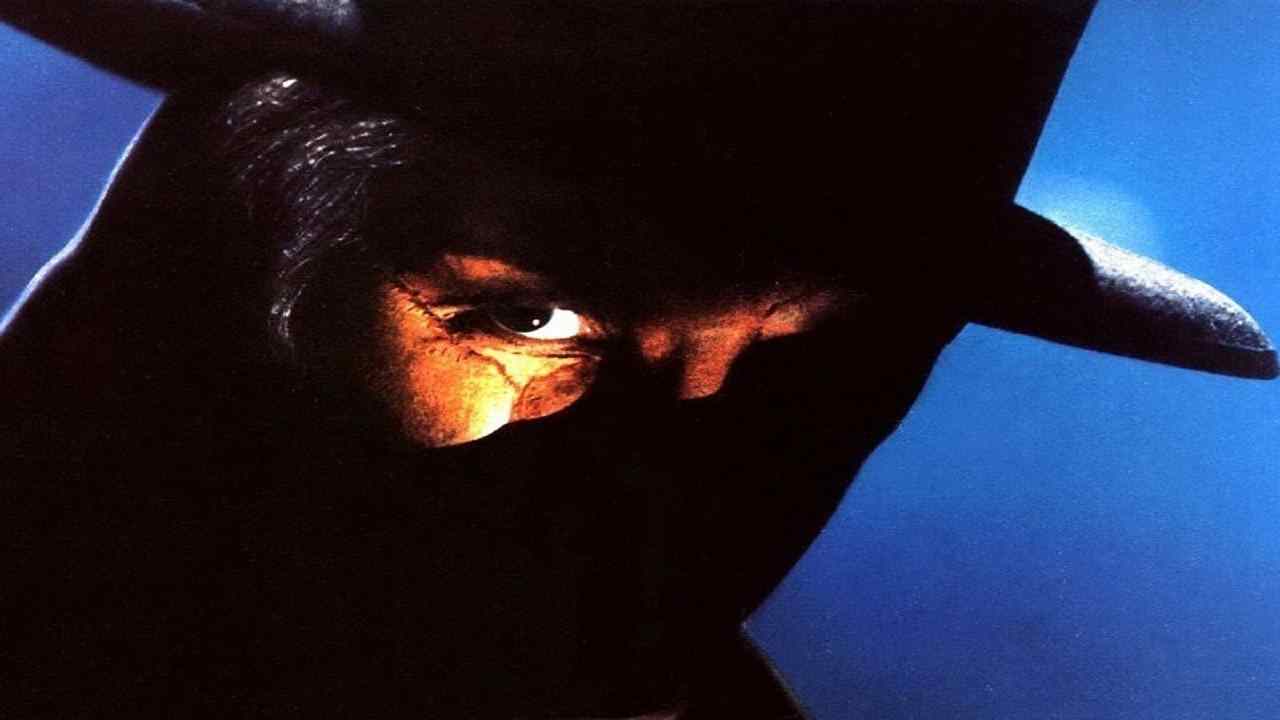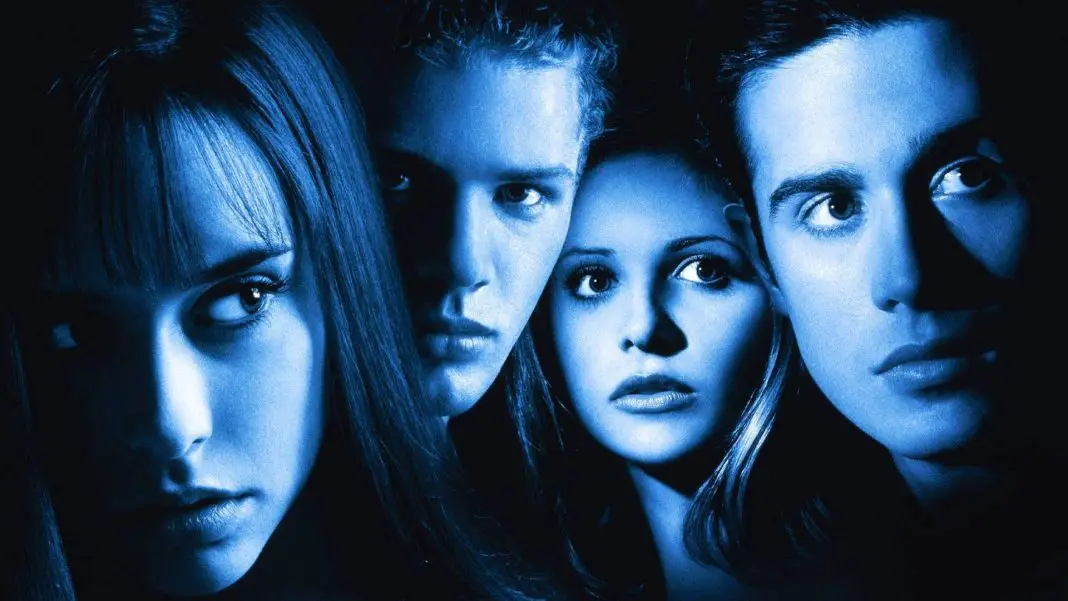When Puppet Master was first released, it became an unexpected hit on home video, launching Full Moon as one of the premiere DTV studios of the era. The first sequel was, in some ways, a more refined version of the first. It delivered more puppet kills and succeeds the best as a horror film. The third is, according to most, the very best of the series and one of the best straight-to-video horror films ever made. While they’re certainly more beloved than everything that came after, fans are somewhat split on the fourth and fifth entries.
Filmed back-to-back, Puppet Master 4&5 tell a singular story, but it’s one that’s completely different from everything that came before it. Fans were taken aback by the idea that this time, the puppets were not the bad guys. In these two films combined, the puppets take a grand kill count of exactly one person. But I think that criticism of them, while understandable, is also somewhat baffling, because the puppets had never been the bad guys.
They’d done bad things, absolutely. But the first movie was a very unique approach to a murder mystery as it was not about the killer puppets, necessarily, but about who was controlling them and telling them what to do. That movie states twice that the puppets are harmless until they fall into the wrong hands. In the second, their master has gone insane from years in the grave and they are explicitly killing for the sake of survival.

Those two sequels don’t just have a different tone or style than their predecessors, they transfer—in some ways—into a fundamentally different genre. They drag a mystical, archaic mythology into the modern era. Well, modern for 1993 at least. The early nineties were, after all, still in the height of cyberpunk. That movement began around the early eighties, with the release of films like Blade Runner and books like William Gibson’s Neuromancer. They were about technical revolutions, the fundamental power of technology and the way it affects or shapes society.
Given that they’re early Full Moon films, Puppet Master 4 and 5 deal with these themes in an appropriately small-scale way. Rick Myers is a technological genius, a wunderkind who is on the verge of a massive breakthrough in artificial intelligence. He’s working entirely in the field of robotics and for the purposes of finding a quiet place to conduct his research, he takes a job as caretaker at the Bodega Bay Inn. That’s when he begins what ultimately turns into an actual, fully formed arc as he moves from being someone rooted completely in science to accepting his role in the fundamentally mystical position of puppet master.
 The relationship between the scientific and mystical worlds form the core of both of these movies. The people Rick’s working for don’t even understand that they’re on the path to emulating the secret of life, a secret that Andre Toulon once learned from an old sorcerer who had in turn stolen it from an ancient demon. That even sounds like something out of an old myth, and I love that. Rick’s searching for the answer to artificial intelligence, but it’s a dead end because the reality of his situation is, well, fundamentally removed from reality. It’s magic, and he doesn’t even realize that.
The relationship between the scientific and mystical worlds form the core of both of these movies. The people Rick’s working for don’t even understand that they’re on the path to emulating the secret of life, a secret that Andre Toulon once learned from an old sorcerer who had in turn stolen it from an ancient demon. That even sounds like something out of an old myth, and I love that. Rick’s searching for the answer to artificial intelligence, but it’s a dead end because the reality of his situation is, well, fundamentally removed from reality. It’s magic, and he doesn’t even realize that.
Sutekh is an ancient evil being, much like the devil. He believes that what is rightfully his was stolen from him and he wants it back. He’s sending monsters to kill scientists and, of course, things boil over into a small-scale war that rages throughout the hotel. And if you’re a puppet, a hotel of that size is a battlefield. It’s a huge landscape when you’re standing two feet from the ground.
The Totems that the puppets are forced to fight basically serve the purposes of robots, even if they’re completely organic, even if they’re totally driven by magic. They’re not souls occupying a body for the long haul like the puppets are, they’re just avatars used by demons from the other side. They’re being driven, but they’re not necessarily alive.
 The war between the mystical and the scientific in Puppet Master 4 & 5 basically come down to the willingness of one to accept the other. Many of the characters who die are scientists, from Dr. Baker and Dr. Piper to the annoyingly ambitious Cameron. And then there’s Dr. Jennings, who accepts the puppets in an entirely wrong way, seeing them as something to be exploited for maximum profit. Instead of coming to an understanding of magic, he only wants to be profit from it and because of that, it makes perfect sense that he would be the only human that the puppets kill over the course of the two films.
The war between the mystical and the scientific in Puppet Master 4 & 5 basically come down to the willingness of one to accept the other. Many of the characters who die are scientists, from Dr. Baker and Dr. Piper to the annoyingly ambitious Cameron. And then there’s Dr. Jennings, who accepts the puppets in an entirely wrong way, seeing them as something to be exploited for maximum profit. Instead of coming to an understanding of magic, he only wants to be profit from it and because of that, it makes perfect sense that he would be the only human that the puppets kill over the course of the two films.
Rick has to transition from starting out as potentially one of the strongest scientific minds of his time to fulfilling the role he has somewhat unwittingly stepped into as puppet master. For him to win, save his girlfriend, save his own life and beat back the forces of evil, he has to accept that these things operate on a level that he does not understand. While there are potential similarities between the two worlds, this is magic. When Rick accepts that, he is able to bridge the gap and essentially unite the two worlds.
This is represented by the creation of Toulon’s unfinished puppet, Decapitron. While he is not aesthetically too different from the other puppets, he’s fundamentally different. Yes, he’s still a human soul inside of a puppet body. In fact, he’s the original puppet master Toulon himself. But he’s brought to life in a very Frankenstein-esque way. He’s created through a mixture of Toulon’s serum and electricity, from computer programming to being struck by a bolt of lightning in a tried-and-true classical way.
While I’m sure the Frankenstein elements were simply a nice nod by the filmmakers to classic horror films of the past, there are definite parallels between the two stories. Victor Frankenstein is on the cusp of a revolution, he can feel it. He’s looking to create life with his bare hands, as is Rick, albeit in a fundamentally different way. Victor finds no answers in modern science, he’s ridiculed for even bringing up his theories in medical school, so he looks to the science of the past. He looks to alchemy and, essentially, to magic.
 He’s looking at things like galvanism which, even in his era, are no longer considered to be anything approaching actual science. But it’s through pushing forward and accepting those older practices that he is able to bring his creation to life. Rick’s path, though significantly less obsessive, is strikingly similar.
He’s looking at things like galvanism which, even in his era, are no longer considered to be anything approaching actual science. But it’s through pushing forward and accepting those older practices that he is able to bring his creation to life. Rick’s path, though significantly less obsessive, is strikingly similar.
Decapitron represents the marriage of the scientific and magical forces at war in this movie. Even though it makes no sense to have to bring him to life in both movies, his creation is crucial to the story and bringing this miniscule stop-motion war to its climax. The only way to win this fight is to effectively bring both ideas together. Decapitron looks like the other puppets, but one of his many heads is a tesla coil that shoots bolts of lightning. It’s not modern science and it shouldn’t be.
It still represents the 1940s aesthetic of the other puppets, but at the same time it operates on a different level. In fact, each head sort of gradually goes from mystical to robotic. The weapons head is somewhere between the two. The shape-shifting head is entirely mystical, and then there’s a purely robotic head for scanning the terrain.
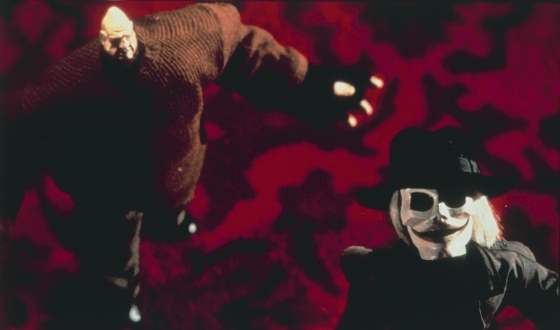 Even though these two movies are so far removed from anything done in the installments before them, Puppet Master 5—which was billed as The Final Chapter—feels like it does bring the franchise full circle in some ways. First, we have Andre Toulon, the puppet master, finally becoming a puppet himself. Then, we have this whole thing end in a fight between the man who’s life was in many ways cursed by this discovery and the demon responsible for this magic in the first place.
Even though these two movies are so far removed from anything done in the installments before them, Puppet Master 5—which was billed as The Final Chapter—feels like it does bring the franchise full circle in some ways. First, we have Andre Toulon, the puppet master, finally becoming a puppet himself. Then, we have this whole thing end in a fight between the man who’s life was in many ways cursed by this discovery and the demon responsible for this magic in the first place.
Yes, Puppet Master 4 & 5 are crazy, campy B-Movies that feature moments like a puppet laser tag sequence and Jester bashing a man’s balls in with a meat tenderizer. But they manage to have themes all the same. The fight between science and magic is at the core of many genre stories and always has been, it’s a theme that’s run from Frankenstein down to Buffy the Vampire Slayer. Even if these two movies are just stepping stones, they’re important ones. Those themes aren’t brushed over in these sequels, they affect them on every level and are handled in an underrated and ultimately impressive way.
